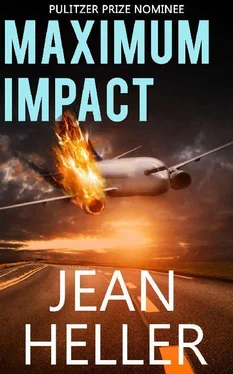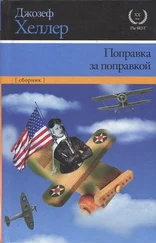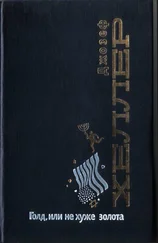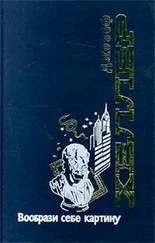Schaeffer believed journalism was a calling, like the priesthood. It represented the glue that held together the fabric of the democracy. Newspapers were the last line of defense between the Constitution and those who would unintentionally, or willfully, erode the freedoms it guaranteed. In Schaeffer’s mind, a newspaper’s role was to protect the people from the excesses of government, regardless of the political extreme from which those excesses threatened.
Despite his idealism, he did love the hardware. There was nothing wrong with a fine priest being recognized as such by elevation to the papacy, and there was nothing wrong with tangible symbols of a newspaper’s greatness, either. The prizes were Schaeffer’s barometer of success, and rarely a day went by when he didn’t remember that more of those prizes came during his eleven years as editor than in all the years of all the editors who preceded him. So he had designed the conference room and its display, and someone on the newspaper dubbed it the Glory Room. The name stuck long after the identity of the author was forgotten.
On this morning, the room was alive with activity a full four hours earlier than usual, and chairs from reporters’ desks were shoehorned in to seat the overflow crowd. Everyone had a copy of the morning’s final edition, and Schaeffer was in deep conversation with National Editor Paul Wister over one of the three pictures that dominated the front page. It was one Steve Pace had thought would never run, a telescopic shot of the interior of the dead Sexton 811, the passengers still hanging in their seats. The photograph had been altered during printing to leave the images of the bodies underexposed. Although the photo was taken from an angle behind the seats, concern remained that friends and relatives would recognize someone.
Wister had argued the previous afternoon against using the photo at all, in deference to public sensibilities. Schaeffer, who could have overruled his national editor, chose instead to call in Managing Editor Alec Stenofsky, Metro Editor Winston Henry, Virginia Suburban Editor Suzanne O’Connor, and Photo Editor Herman Golke, and chair a half-hour free-for-all on the question. Schaeffer was not known to abdicate tough decisions, but this one could go either way. On one hand, the picture was too good to ignore, and on the other, it was of Washingtonians killed in a local accident, not of Nigerians or Chileans killed 10,000 miles away.
In the end, the consensus was to run the picture with parts of it underexposed. Golke, a huge Hungarian who professed to love photographs more than life itself, had thrown up his hands in exasperation. “You either run it or you don’t, but you don’t take a quality photograph and run it fucked up,” he raged. But he lost, and the next morning Schaeffer and Wister were still debating the question, although both The Washington Post and The New York Times used similar shots. Unlike its competitors’, however, the Chronicle’s photograph ran in color.
At 8:35 A.M., Schaeffer raised his hands to quiet the jammed room. His tie already was down to his second shirt button, and his sleeves were rolled to the elbows.
“I know most of you were here very late last night, and this is damned early in the morning for a meeting, but we have an entire weekend’s work to plan,” he commanded, and the room stilled. “Thank you. First of all, I commend each of you who had a hand in today’s coverage. I think our package was head and shoulders above any other I’ve seen. The stories were first-rate. We got all the angles covered, and then some. The photos conveyed all the horror and grief as effectively as we could without making our readers gag.
“But the important thing is, we’re ahead on this story, and I want to stay there. Better yet, I’d like to get even further ahead. I want interviews with the wife and kids of the pilot who almost made it. I want somebody with the ConPac people until we have the entire passenger list. I don’t want to trust the wires on this one. There’s too much lag time. When and if any important names show up, I want them phoned in so we can start follow-up immediately. I want the metro and suburban staffs on the families of the victims like glue: wakes, funerals, burials, memorial services, school tributes, the whole schmear. I want personal stories—people who are alive because they missed the flight, people who are dead because they took some special opportunity or had a special reason to be aboard. Winston, Suzy, you’ve got carte blanche to cancel days off, pay overtime, whatever it takes, and I want the photo department kept apprised hourly on what’s going down. Understood?” Winston Henry and Suzanne O’Connor were nodding. “This is the human story, the drama. And I don’t want to lose a drop of it, understood?” More nodding.
“All right. Paul—” he turned back to his national editor “—is Steve Pace here?”
Pace raised a hand off to Schaeffer’s right, a gesture meant to catch the editor’s eye, although it made him feel like a schoolboy asking for a bathroom pass.
Schaeffer nodded at him and grinned. “Yeah, Steve. You did one hell of a job yesterday. I didn’t know one reporter could be in so many places at once. Your description of the mid-field terminal was heartrending. The other guys didn’t have any of that. They also didn’t have that eyewitness stuff from the controller or the info on that poor bastard in the Cessna. You had a hell of a day. But the Times and the Post are after your ass now. What’ve you got to hold ’em off?”
Pace felt himself grin and color slightly at the compliment, though he didn’t feel good about writing the story on the mood in the mid-field terminal. He had done it out of anger at B. J. Houston’s decision to throw him out, but it made him feel as though he’d violated the confidence and privacy of a lot of people. He hoped Kathy wouldn’t object.
“I talked to Mitch Gabriel at the NTSB first thing this morning,” Pace told Schaeffer. “He said the shoring operation on the fuselage would probably be done by noon. Then the investigators will go in, and recovery teams will start bringing out bodies. The bodies will go into refrigerated tractor-trailer rigs until a morgue can be set up someplace.”
Schaeffer turned to Golke to say something about getting photos, but the photo editor was already taking note. Schaeffer turned back to Pace and nodded to continue.
“The NTSB and Consolidated Pacific are still marking and photographing the wreckage. It will take some time, days probably, but they’ll eventually move it all into Hangar Three, a big ConPac facility at the airport. It’ll be sealed off during the investigation. The Sexton engineering team is on site, I’m told. If the Converse team isn’t here already, it will be soon. The bodies of the victims, as you know, will be released to next of kin once positive identifications are made. It will help that the recovery teams will note the seat numbers where individual bodies were found. But positive IDs will still be tough. It would make a good read to get one of our science writers to do a piece on how pathologists identify badly-burned remains.”
“Good idea,” Schaeffer said. Wister was making a note of it.
Pace continued. “One of the things I need to do today is backcheck the 811 to see if this apparent engine failure is part of a pattern or just a fluke. I wrote today that the Sexton at Dulles had a clean history. But fleet-wide, there have been some problems. The reports are on file at the FAA’s records dump in Oklahoma City. They’re public information, and I’ve asked for them. The fleet’s been operational only six months or so, so the problems could be shakeout things. But we ought to be certain.”
Читать дальше










